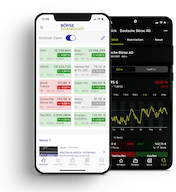Market sentiment: “Escape from pessimism”

Many have switched from short to long positions, more out of loss than genuine conviction. Goldberg doubts the potential for rising prices.
Summary
Professionals and private investors are responding to the ongoing fluctuations and new record highs in much the same way: by buying. 11 percent of professionals have gone long, around two-thirds of whom were previously short. The sentiment index rose by 18 points to -3. The situation is similar for private investors, with 7 percent new optimists compared to 9 percent former pessimists. Their sentiment index is significantly higher at +12 points.
According to Joachim Goldberg, the closing out of short positions was largely without profit. He rates the mood among professionals as slightly bullish at most. The behavioral economist does not see any real conviction behind the purchases. However, he also no longer sees any “major imbalances.” Goldberg therefore expects a sideways trend with potential demand from 23,750/23,800 points and little upward momentum.
13 August 2025. FRANKFURT (Goldberg & Goldberg). During the past few trading days, it appeared as though hopes that the summit between the US and Russia in Alaska this coming Friday could lead to a ceasefire in the Ukraine war had generated fresh demand for stocks in Germany. However, it is also possible that the new highs reached by the S&P 500 and Nasdaq in the US have rekindled buying enthusiasm on the DAX. Even before that, however, our previous sentiment survey clearly showed that the stock market barometer was well supported at the lower end. Although the trees did not grow to the sky, a temporary weekly gain of 1.7 percent still remained at 0.8 percent at the time of the survey.
In fact, the DAX has coped quite well with capital outflows from international fund managers. At least, the Bank of America's August survey published yesterday shows that only 24 percent of asset managers say they are still overweight in eurozone equities – down from 41 percent in the previous month (a four-year high). In the end, it can be said that the majority of pessimists in this country in recent weeks have probably not gotten their money's worth.
More compulsion than conviction
Meanwhile, sentiment among the institutional investors with a medium-term trading horizon that we surveyed has also improved significantly compared to the previous week. Our Frankfurt Stock Exchange Sentiment Index rose by 18 points to a new level of -3. At the same time, the bull camp grew significantly, by 11 percentage points. Almost two-thirds of this increase is attributable to former pessimists who have made a 180° turn from bearish to bullish – the rest comes from investors who were previously neutral.
We are seeing a similar development among private investors. In this panel, the Frankfurt Stock Exchange Sentiment Index rose by 16 points to a new level of +12. This is because the group of bears has decreased by 9 percentage points. More than three-quarters of them have switched directly to the bullish side, while the rest have joined the neutral investors. Interestingly, unlike usual, there was no significant difference in sentiment between those surveyed via social media and other private investors this time.
Little appetite for risk
Today's survey shows that the gap in sentiment between private and institutional investors has changed only marginally, although the former are significantly more optimistic. At least both groups were able to free themselves from some of their more pessimistic commitments, and a large proportion of those willing to switch immediately ventured onto the bullish side. However, it should be noted that institutional investors in particular have only just managed to shake off their overall negative sentiment. And when looking at the relative picture over three and six months, there is only very slight optimism.
At least, as things stand today, major imbalances appear to have been eliminated, but there is no sign of investors taking on significant risks. This is in stark contrast to international fund managers, whose cash holdings remain below the important 4 percent mark (3.9 percent), which in some quarters is interpreted as a contrary selling signal against the trend for US equities (as measured by the S&P 500). This is a fear that is less likely to plague investors in this country, especially since there should be no major imbalances in terms of sentiment. At the same time, however, this means that the DAX is likely to continue to move sideways for some time – at least the downside (23,750/23,800 DAX points) is still well secured due to potential demand. However, there is currently no major driver from a domestic perspective alone.
by Joachim Goldberg
13 August 2025, © Goldberg & Goldberg für boerse-frankfurt.de
Videokommentar
Sentiment index of institutional investors

| Bullish | Bearish | Neutral | |
|---|---|---|---|
| Total | 36% | 39% | 25% |
| vs. last survey | +11% | -7% | -4% |
DAX (change since last survey): 24,160 points (+185 points since last survey)
Frankfurt Stock Exchange Sentiment Index for institutional investors: -3 points (+18 points since last survey)
Sentiment index of private investors

| Bullish | Bearish | Neutral | |
|---|---|---|---|
| Total | 46% | 34% | 20% |
| vs. last survey | +7% | -9% | +2% |
DAX (change since last survey): 24,160 points (+185 points since last survey)
Frankfurt Stock Exchange Sentiment Index for private investors: 12 points (+16 points since last survey)
About the Frankfurt Stock Exchange Sentiment Index
The Frankfurt Stock Exchange Sentiment Index ranges between -100 (total pessimism) and +100 (total optimism), with the transition from positive to negative values marking the neutral line.
More articles from this columnist
| Time | Title |
|---|






